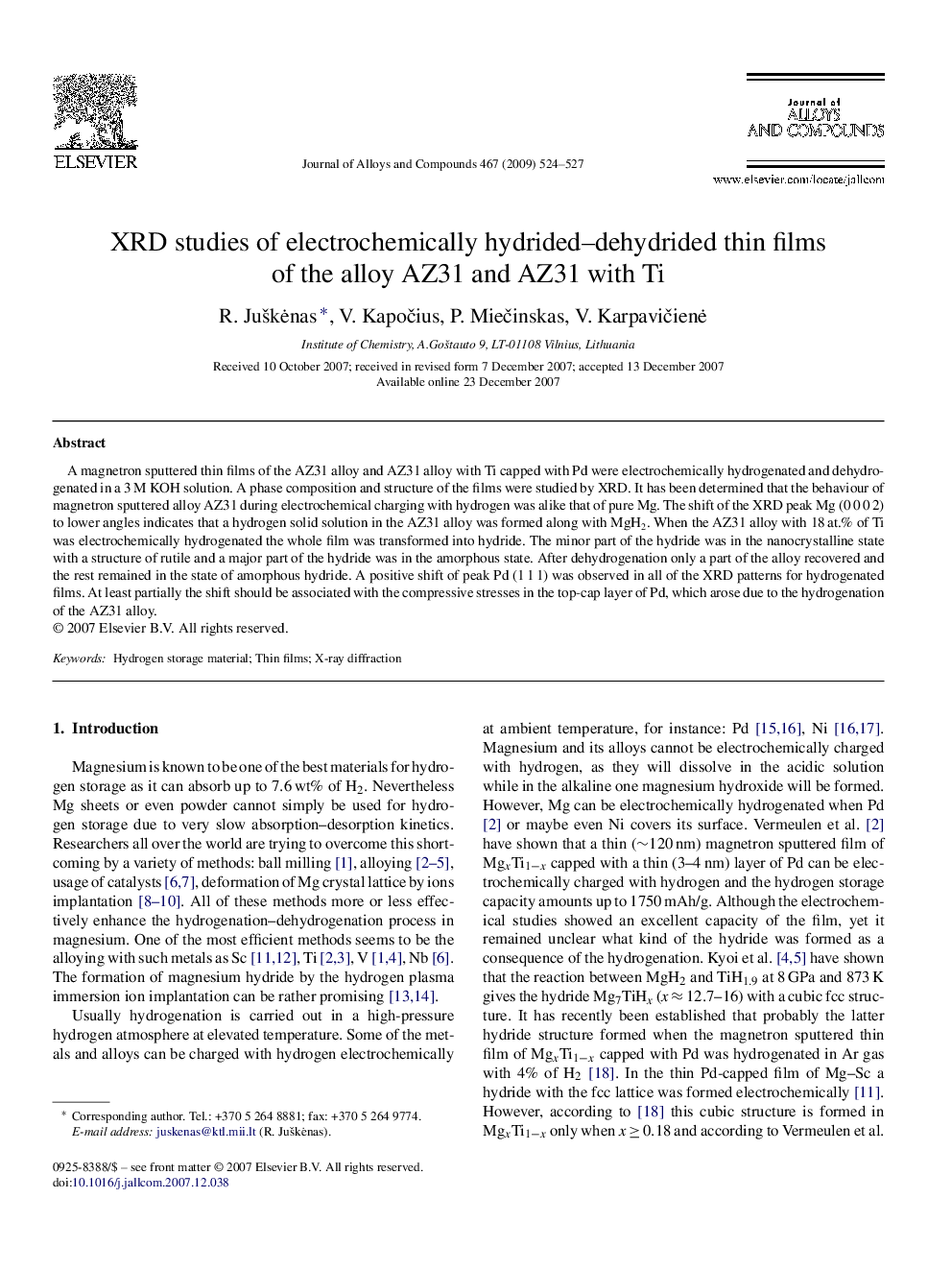| Article ID | Journal | Published Year | Pages | File Type |
|---|---|---|---|---|
| 1624148 | Journal of Alloys and Compounds | 2009 | 4 Pages |
A magnetron sputtered thin films of the AZ31 alloy and AZ31 alloy with Ti capped with Pd were electrochemically hydrogenated and dehydrogenated in a 3 M KOH solution. A phase composition and structure of the films were studied by XRD. It has been determined that the behaviour of magnetron sputtered alloy AZ31 during electrochemical charging with hydrogen was alike that of pure Mg. The shift of the XRD peak Mg (0 0 0 2) to lower angles indicates that a hydrogen solid solution in the AZ31 alloy was formed along with MgH2. When the AZ31 alloy with 18 at.% of Ti was electrochemically hydrogenated the whole film was transformed into hydride. The minor part of the hydride was in the nanocrystalline state with a structure of rutile and a major part of the hydride was in the amorphous state. After dehydrogenation only a part of the alloy recovered and the rest remained in the state of amorphous hydride. A positive shift of peak Pd (1 1 1) was observed in all of the XRD patterns for hydrogenated films. At least partially the shift should be associated with the compressive stresses in the top-cap layer of Pd, which arose due to the hydrogenation of the AZ31 alloy.
